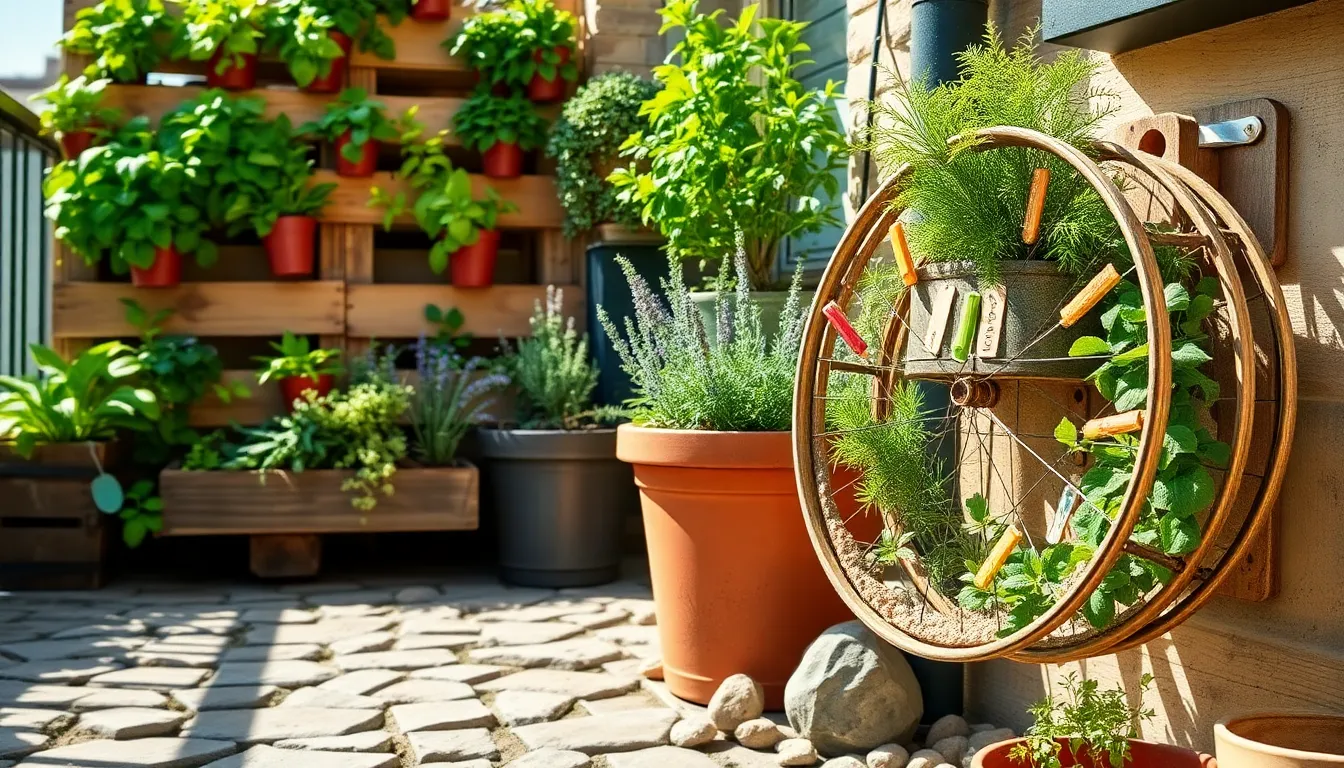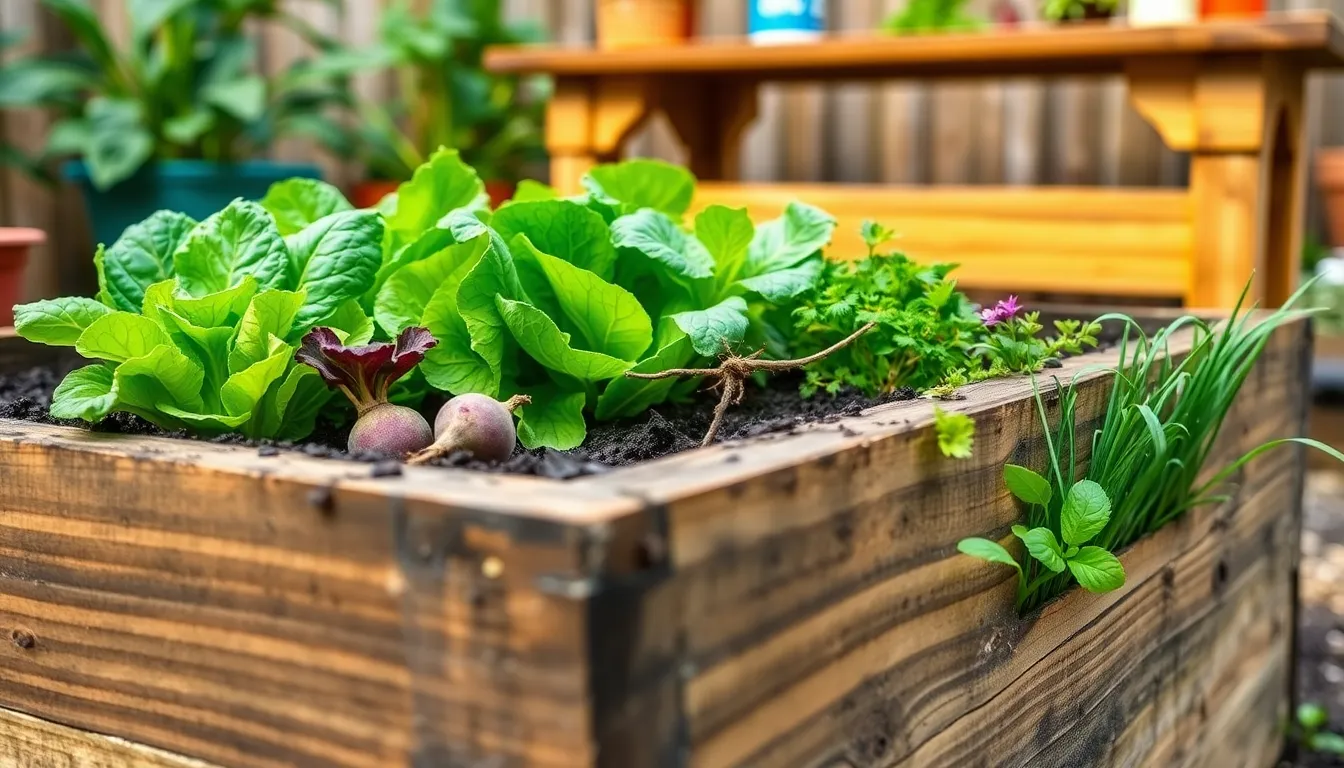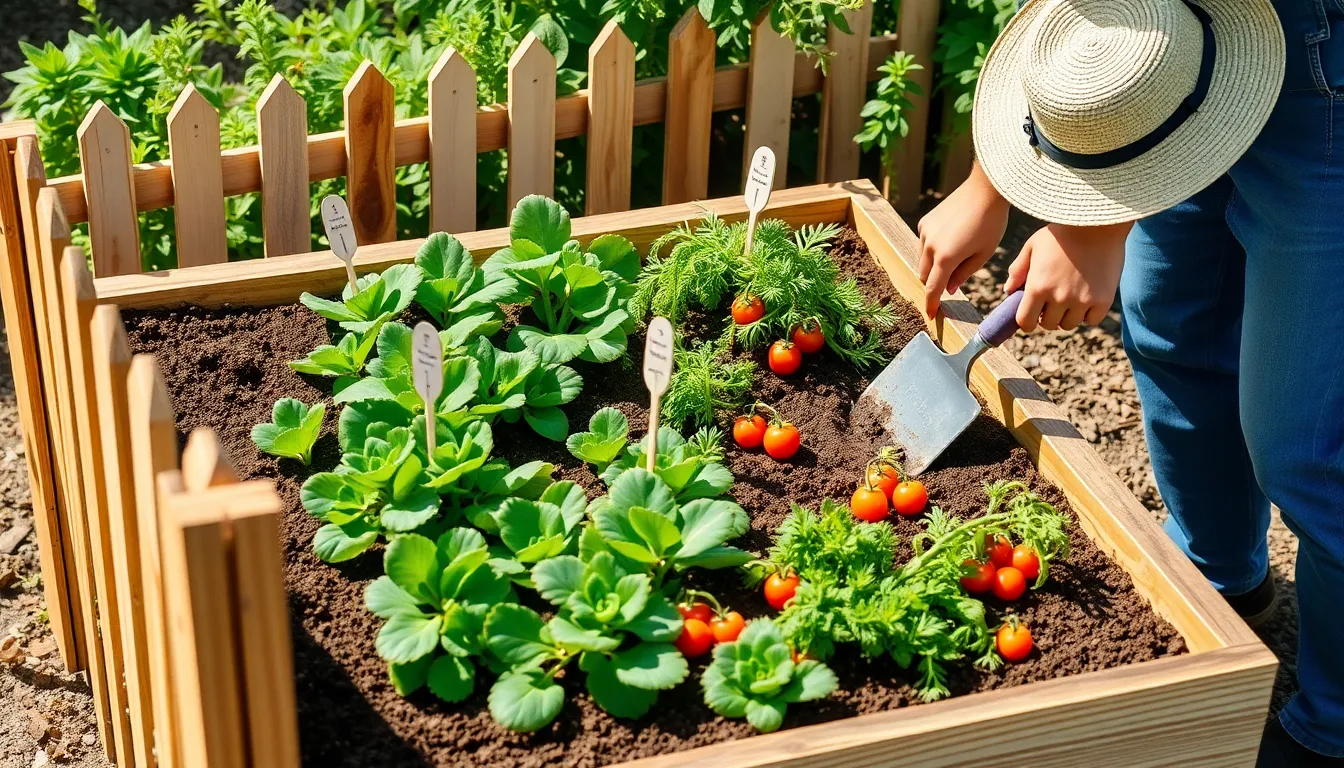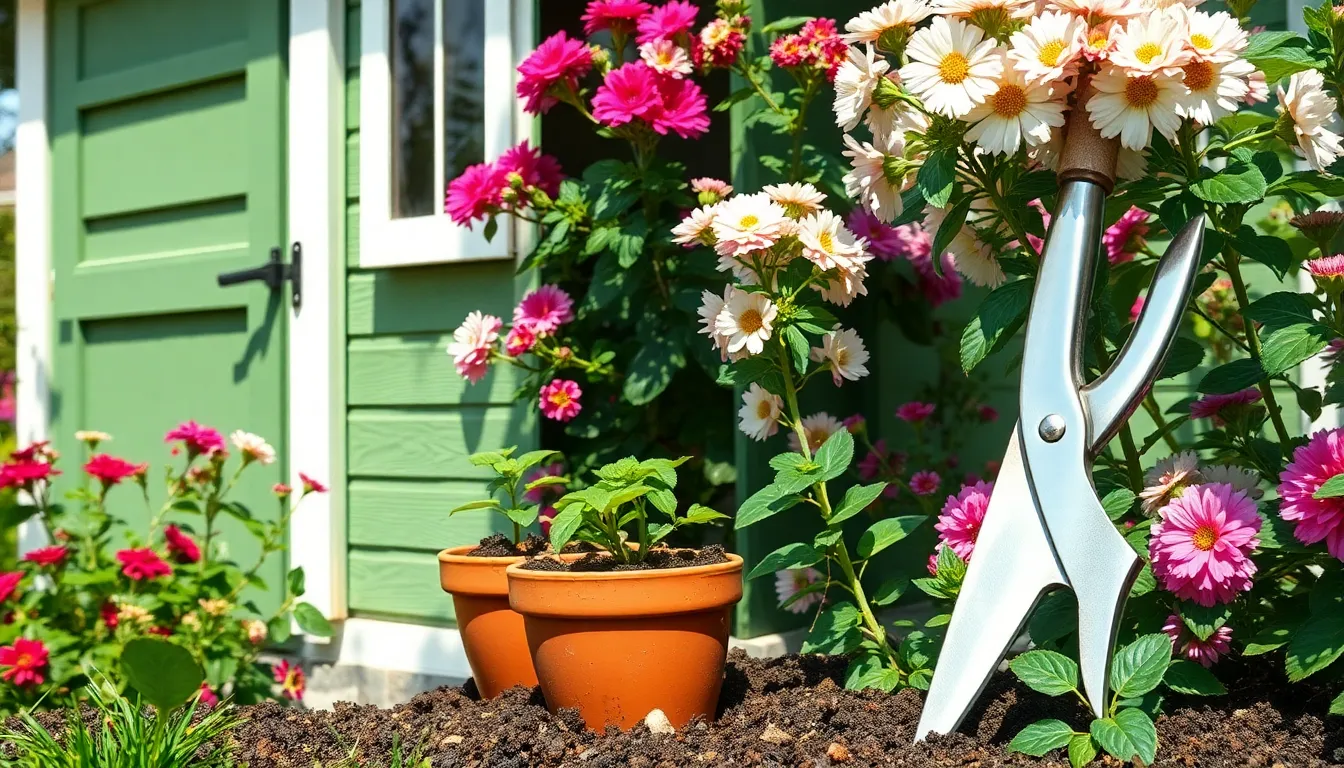Imagine stepping into your backyard and being enveloped by the delightful aroma of fresh herbs, all thriving in beautifully crafted, budget-friendly settings. Whether you’re a green-thumbed veteran or a curious newbie, “10 Budget-Friendly Herb Garden Ideas” offers a treasure trove of creative and cost-effective designs that will elevate your gardening game without breaking the bank.
Even the most experienced gardeners will discover new inspirations to refresh their spaces, while beginners will find approachable projects that promise success from the very start. This guide is packed with practical tips and innovative techniques, ensuring that every reader can confidently cultivate their own vibrant herb garden, reaping the joy of homegrown flavors and fragrances.
Dive into a world where the satisfaction of nurturing life meets the thrill of culinary possibilities, all achievable at minimal cost. By exploring these ideas, you’ll unlock the secrets to a flourishing herb garden that not only enhances your landscape but also enriches your lifestyle with the freshest ingredients right at your fingertips.
Reuse Containers for Herb Pots
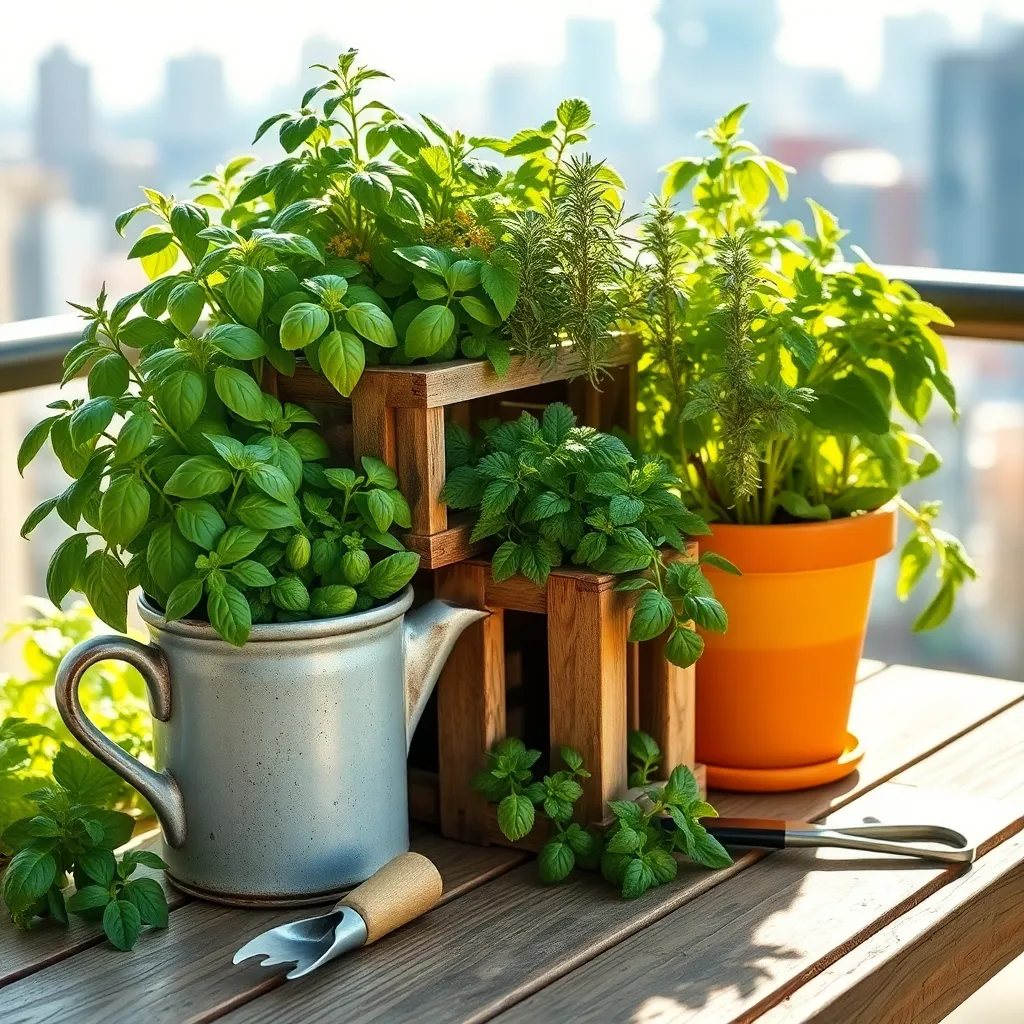
Consider giving a second life to containers like tin cans, jars, or even old teapots by turning them into charming herb pots. Ensure each container has adequate drainage by drilling holes in the bottom, which is critical for preventing root rot and promoting healthy plant growth.
Choose a high-quality potting mix, ideally one that is well-draining and rich in organic matter, to fill your reused containers. Herbs such as basil, mint, and parsley thrive well in these conditions, needing consistent moisture but not waterlogged soil.
For beginners, starting with easy-to-grow herbs like chives or cilantro can offer a quick confidence boost. More experienced gardeners might experiment with less common herbs, such as lemon balm or tarragon, which can add unique flavors and aromas to your garden.
Position your herb containers in a spot that receives at least six hours of sunlight daily, such as a sunny windowsill or balcony. Regularly rotate the containers to ensure even growth and prevent the plants from leaning towards the light source.
Start with Seed Packets
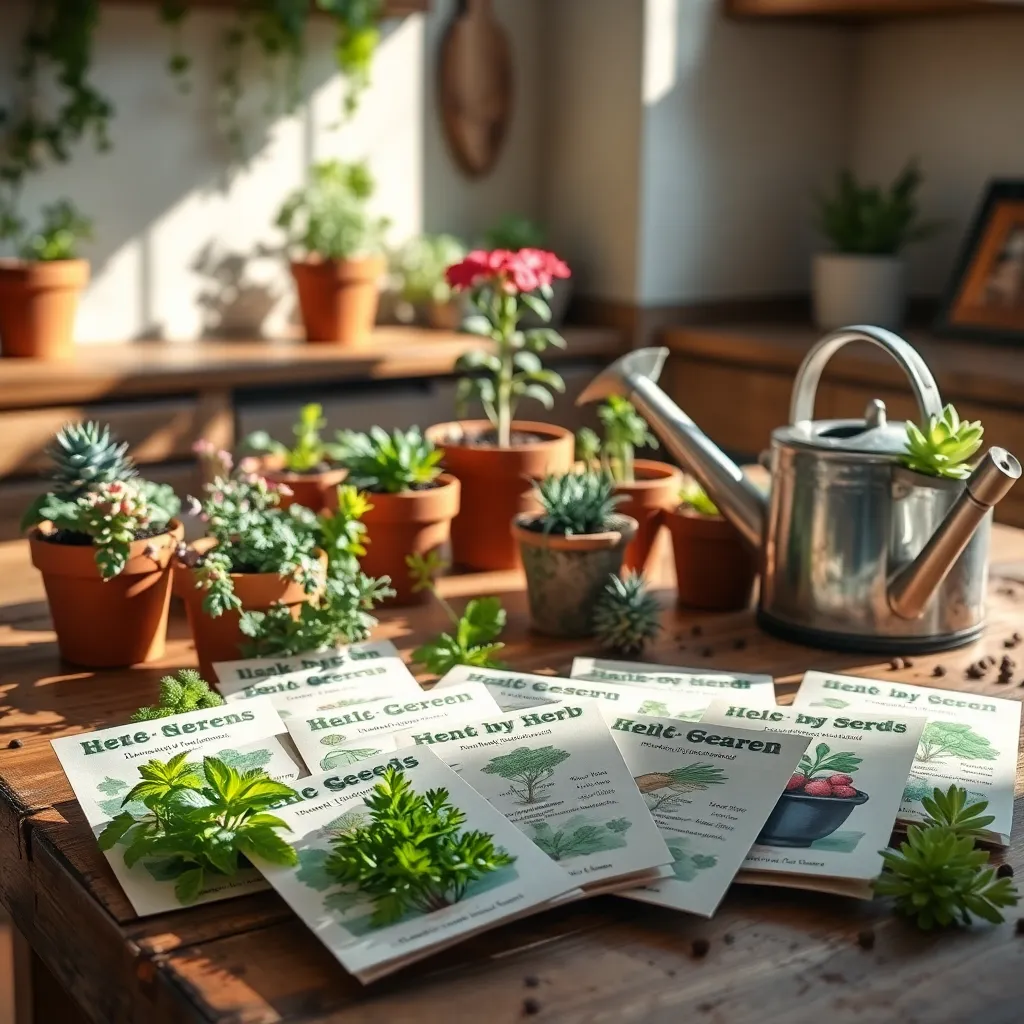
Starting your herb garden from seed packets is not only cost-effective but also opens up a world of variety. Choose seeds from reputable suppliers to ensure high germination rates and healthy plants.
Before planting, read the instructions on the back of each seed packet carefully. Look for specific details such as the best time to plant, recommended soil temperature, and planting depth.
Use seed-starting mix rather than regular potting soil for better aeration and moisture retention. A light, well-draining medium will help prevent seed rot and encourage strong root development.
Once your seeds are planted, maintain a consistent moisture level by gently misting the soil surface daily. Avoid overwatering, as this can lead to fungal diseases that may harm your seedlings.
For optimal growth, place your seedlings in a location that receives at least six hours of sunlight each day. If natural light is limited, consider using grow lights to supplement and ensure your herbs thrive.
As your seedlings grow, thin them out according to the instructions on the packet to prevent overcrowding. This allows each plant enough space to develop fully, ensuring a more robust herb garden.
Create a DIY Vertical Garden
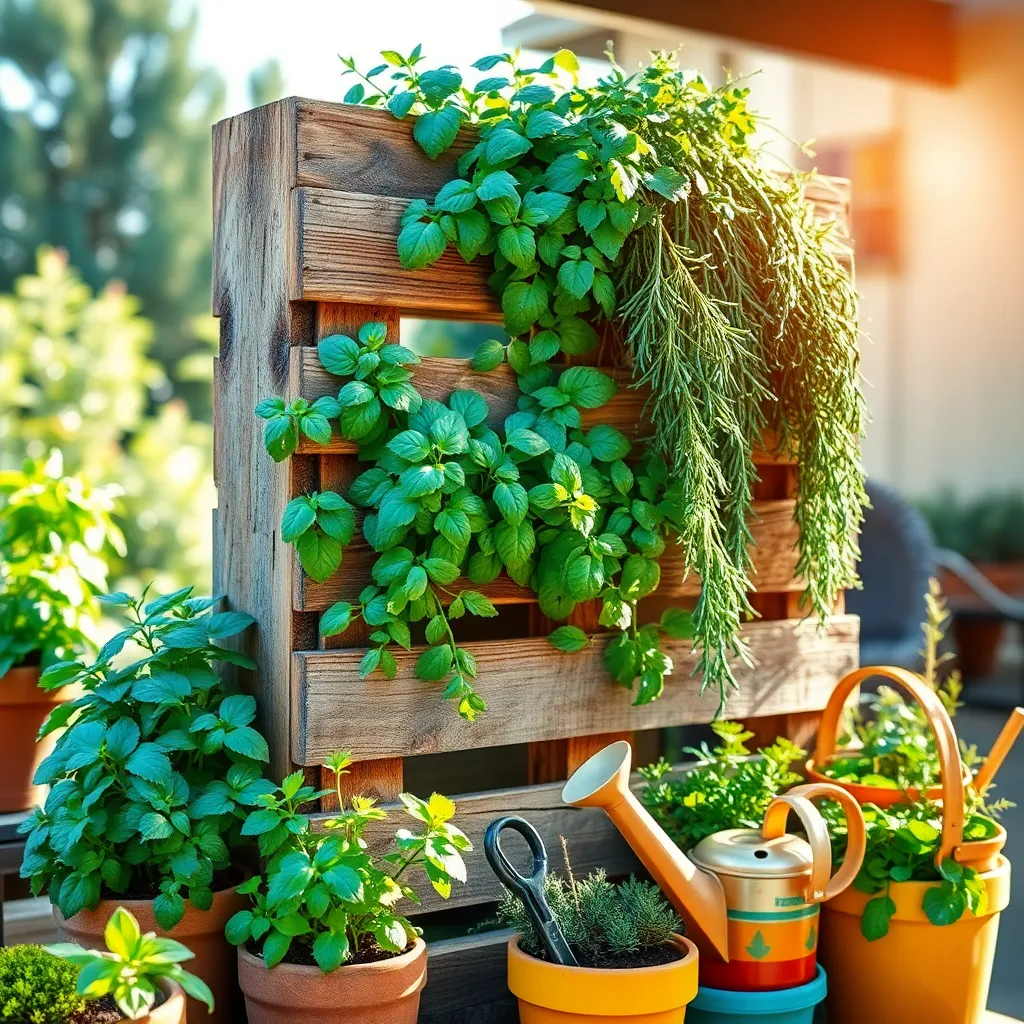
Creating a DIY vertical garden is a fantastic way to maximize space and grow herbs even in small areas. Start by choosing a sunny wall or fence where your herbs will receive at least six hours of sunlight daily, as most herbs thrive in bright, sunny conditions.
Gather your materials, which may include a wooden pallet, fabric pockets, or recycled bottles as planters. Ensure that your chosen containers have adequate drainage holes to prevent waterlogging, a common issue that can hinder herb growth.
For soil, use a high-quality potting mix enriched with organic matter to support healthy growth. Herbs like basil, thyme, and oregano prefer well-draining soil, so consider adding some perlite or coarse sand to the mix to enhance aeration and drainage.
Water your vertical garden regularly, but be cautious not to overwater. A good rule of thumb is to check the soil moisture by sticking your finger an inch deep into the soil; if it feels dry, it’s time to water.
For those seeking a more advanced approach, incorporate a drip irrigation system to ensure consistent watering without the risk of over-saturation. Fertilize your herbs every few weeks with a balanced, water-soluble fertilizer to maintain vigorous growth and a bountiful harvest.
Use Kitchen Scraps as Fertilizer
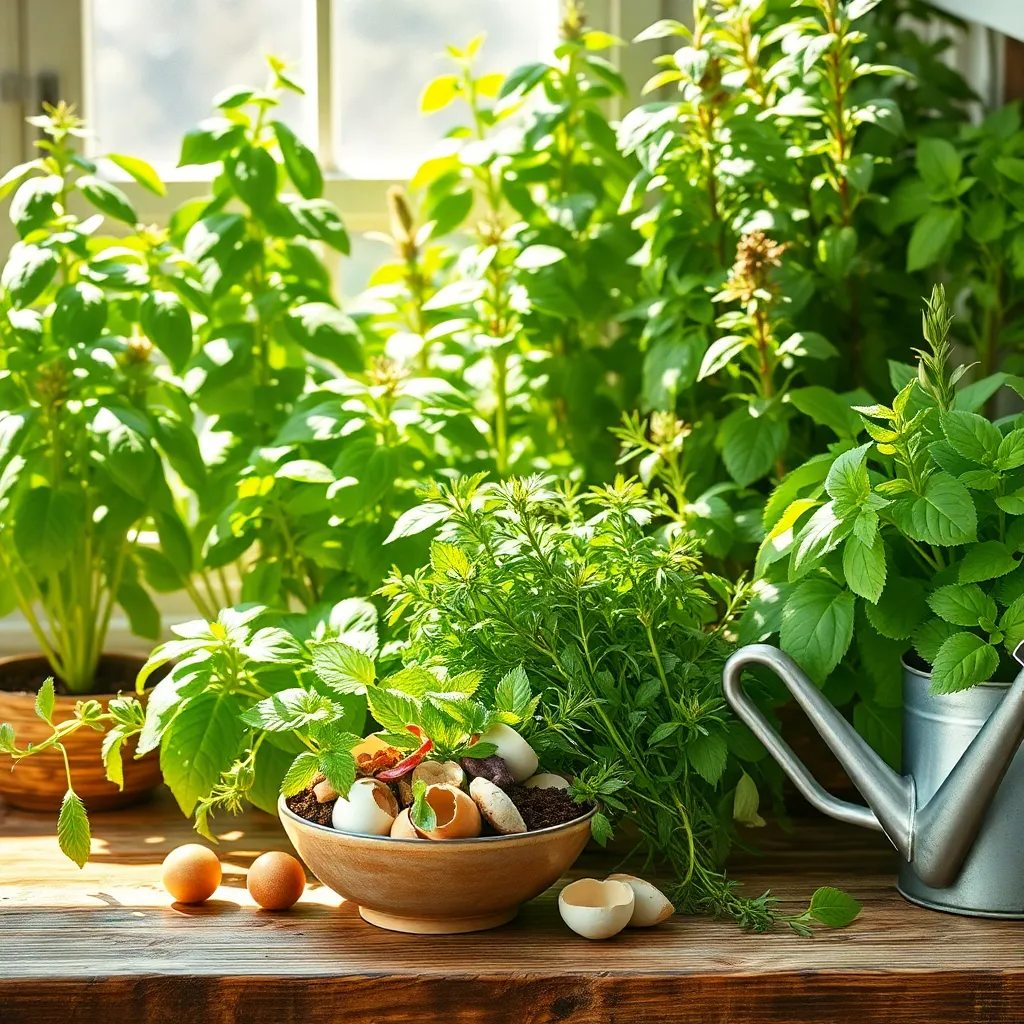
Transforming kitchen scraps into fertilizer is a simple and cost-effective way to nourish your herb garden. Start by collecting vegetable peels, eggshells, and coffee grounds, which are rich in nutrients like nitrogen and calcium.
To begin, create a small compost bin or heap in your yard where scraps can decompose. Turn the compost pile weekly to ensure proper aeration, helping speed up the breakdown process.
Once the compost is ready, you can incorporate it into the soil before planting or as a top dressing around established herbs. This will improve soil texture, water retention, and provide a slow-release of nutrients to your plants.
For those with limited space, consider using a small indoor composting system like a worm bin. Vermicomposting is efficient and produces nutrient-rich worm castings that can be directly applied to your potted herbs.
Try Companion Planting for Herbs

Companion planting for herbs can enhance growth and deter pests naturally. For example, **basil thrives when planted alongside tomatoes**, as it can repel harmful insects while also improving the flavor of the tomatoes.
Try planting **chives near roses or carrots** to fend off aphids and carrot flies, respectively. The strong scent of chives acts as a natural deterrent, making them an excellent companion plant choice for these garden staples.
Consider pairing **cilantro with spinach** to maximize your garden space and improve soil health. Cilantro’s shallow roots allow it to coexist peacefully with spinach, which can benefit from the shade provided by the taller herb.
Experienced gardeners often plant **rosemary alongside sage** for mutual benefits. Rosemary’s robust nature provides a windbreak for sage, while both herbs share a preference for well-draining soil and full sun exposure, making them excellent partners.
Build a Simple Raised Bed
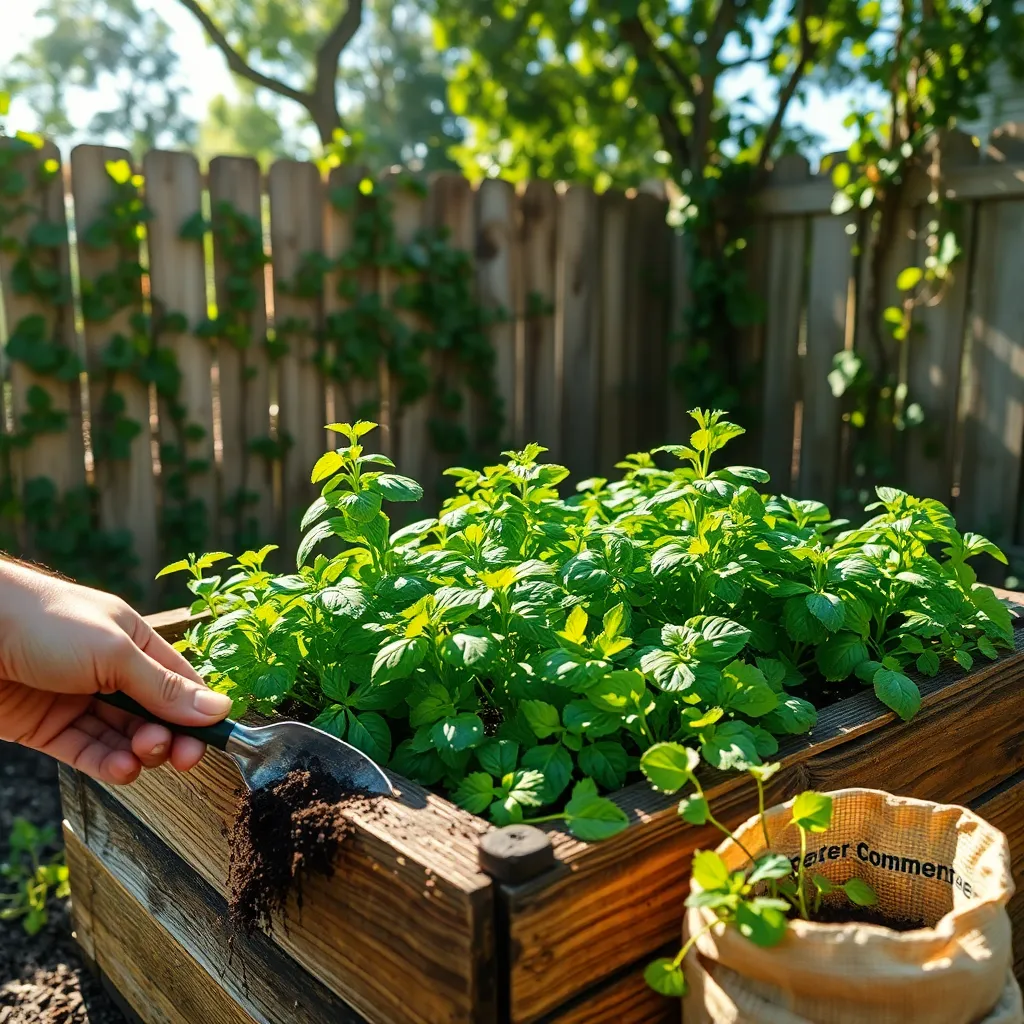
Creating a simple raised bed is an excellent way to enhance your herb garden on a budget. By elevating your herbs, you improve drainage, access, and soil quality, making it easier for them to thrive.
To build a raised bed, you’ll need untreated wood, some screws, a drill, and a saw. Cut the wood into four equal lengths to form a rectangle or square, then screw them together at the corners.
Once your frame is assembled, find a sunny spot to place the bed, ensuring it receives at least six hours of sunlight each day. Fill the bed with a mix of topsoil, compost, and peat moss for a balanced, nutrient-rich environment.
For beginners, starting with easy-to-grow herbs like basil, mint, and parsley can be very rewarding. More experienced gardeners might experiment with a variety of herbs, including rosemary or thyme, which require well-drained soil and less frequent watering.
Regardless of your experience level, ensure your herbs are watered consistently but not excessively, as overwatering can lead to root rot. A helpful tip is to water in the morning, allowing foliage to dry during the day and preventing mildew.
Repurpose Old Furniture for Planters
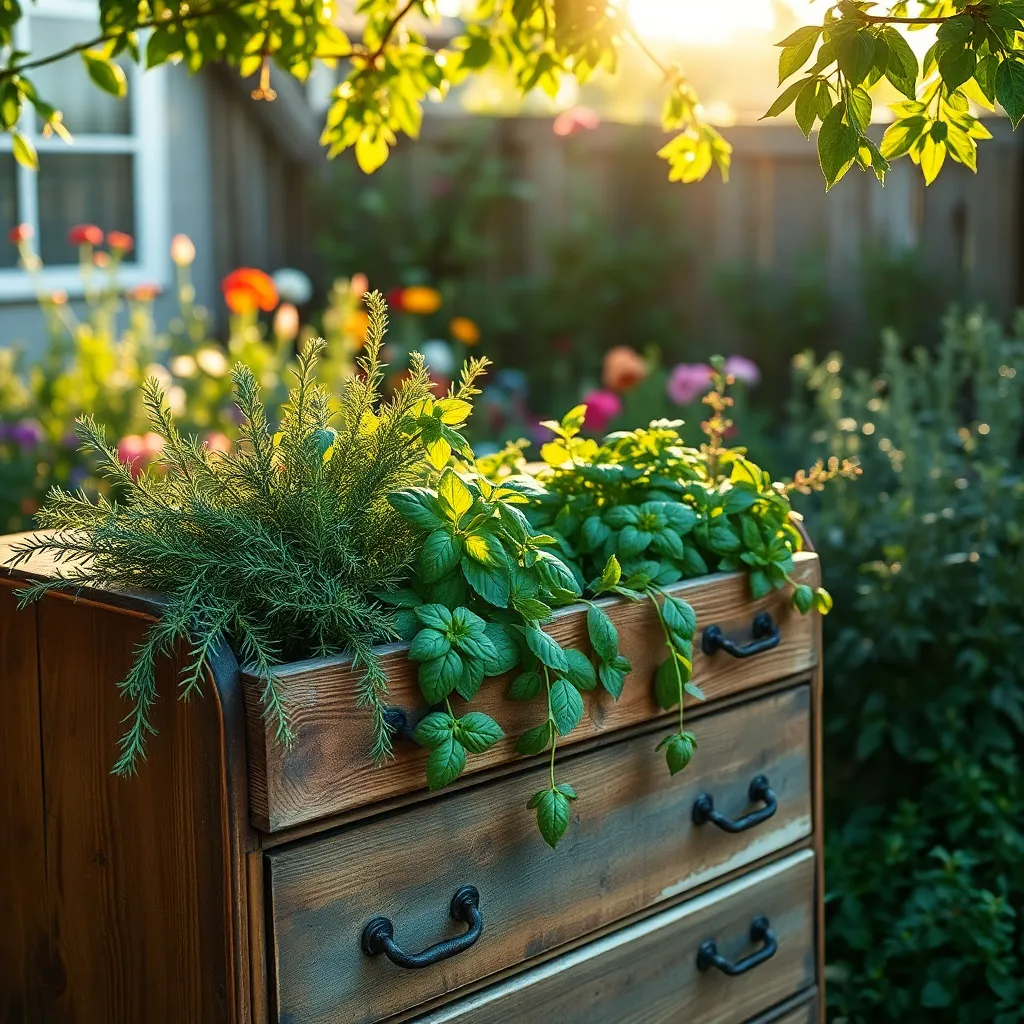
Repurposing old furniture for planters is a creative way to expand your herb garden while being environmentally friendly. Utilize items like wooden drawers, chairs, or even an old dresser to add charm and functionality to your garden space.
First, ensure the furniture is made from materials that can withstand outdoor conditions, such as wood or metal. If your furniture is wooden, treat it with a weatherproof sealant to prevent rot and extend its lifespan.
Drill drainage holes in the bottom of your furniture planter to prevent waterlogging, which is crucial for healthy herb growth. Line the bottom with a layer of gravel or small stones to further enhance drainage and keep the soil from becoming too compact.
Choose a high-quality potting mix, ideally one that retains moisture while providing good aeration for roots. For a beginner-friendly option, consider planting herbs like basil, parsley, or thyme, which thrive in well-drained soil and full sunlight.
Water your repurposed furniture planters regularly, especially during hot, dry spells, but avoid overwatering by checking the soil moisture first. More advanced gardeners might experiment with adding a slow-release fertilizer to provide their herbs with a steady nutrient supply throughout the growing season.
Harvest Herbs Regularly to Promote Growth
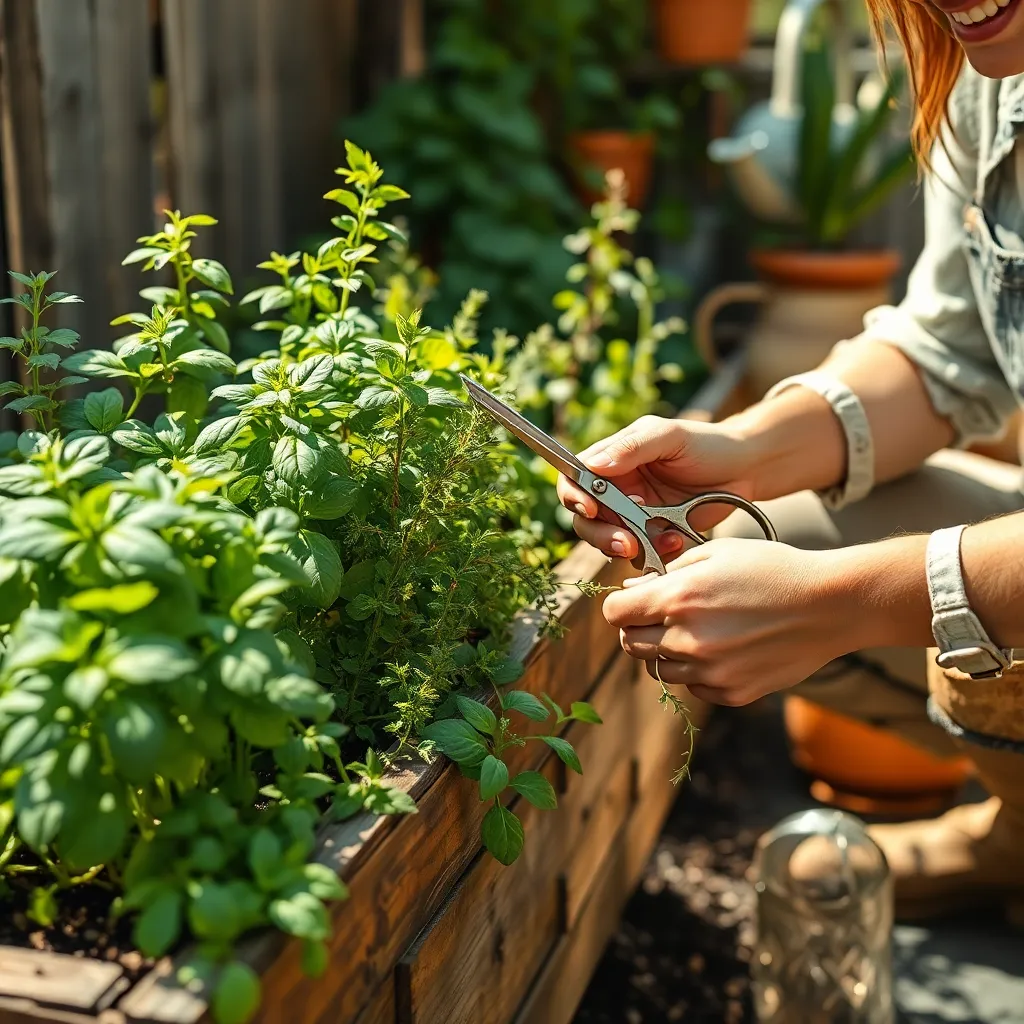
Regular harvesting of herbs is essential to encourage new growth and maintain the plant’s health. By trimming your herbs frequently, you not only get fresh ingredients for your kitchen but also prevent the plants from becoming woody and less productive.
For beginners, start by using a clean pair of scissors to snip the top sets of leaves, which will encourage the plant to branch out. Aim to harvest in the morning when the essential oils are at their peak, enhancing the flavor and aroma of your herbs.
Advanced gardeners can focus on specific techniques like pinching back the tips of basil plants to promote bushier growth. Doing so not only results in a fuller plant but also delays flowering, which can make the leaves bitter.
Remember to use a light, well-draining potting mix, especially if you’re growing herbs in containers. Consistent but moderate watering is key; herbs generally prefer to dry out slightly between waterings to prevent root rot.
Collect Rainwater for Irrigation
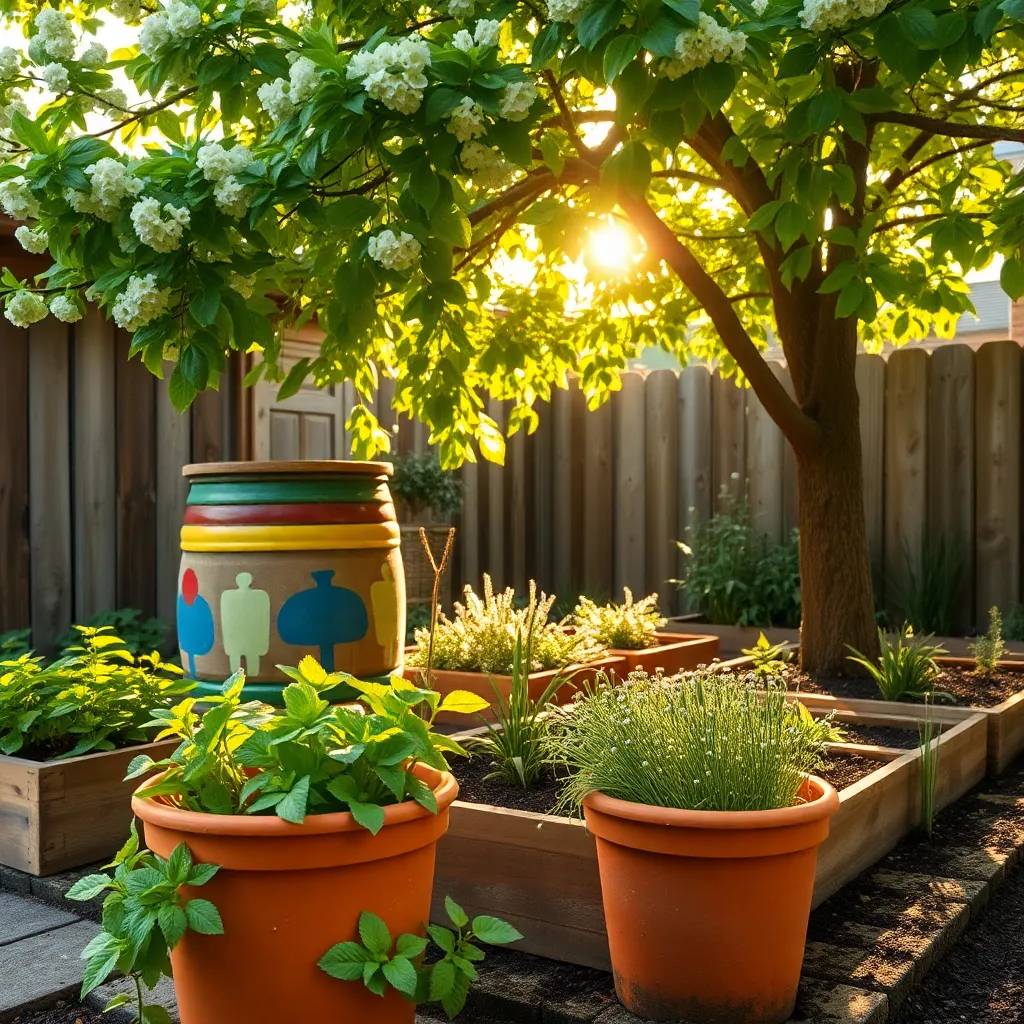
Using rainwater for your herb garden is an excellent way to save money and conserve resources. Installing a rain barrel is a simple, cost-effective method to collect rainwater from your gutters.
Begin by choosing a rain barrel that suits your garden space, ensuring it has a spigot for easy access. Position it under a downspout to efficiently capture rainwater, which you can then use to hydrate your herbs.
Regularly check your rain barrel for clogs and clean it periodically to maintain water quality. This ensures that your herbs receive clean, chemical-free water, promoting healthier growth.
For those looking to maximize their water collection, consider linking multiple barrels with connectors. This setup allows you to store a larger volume of water, which is particularly useful during dry spells.
Utilize Sunny Windowsills Indoors
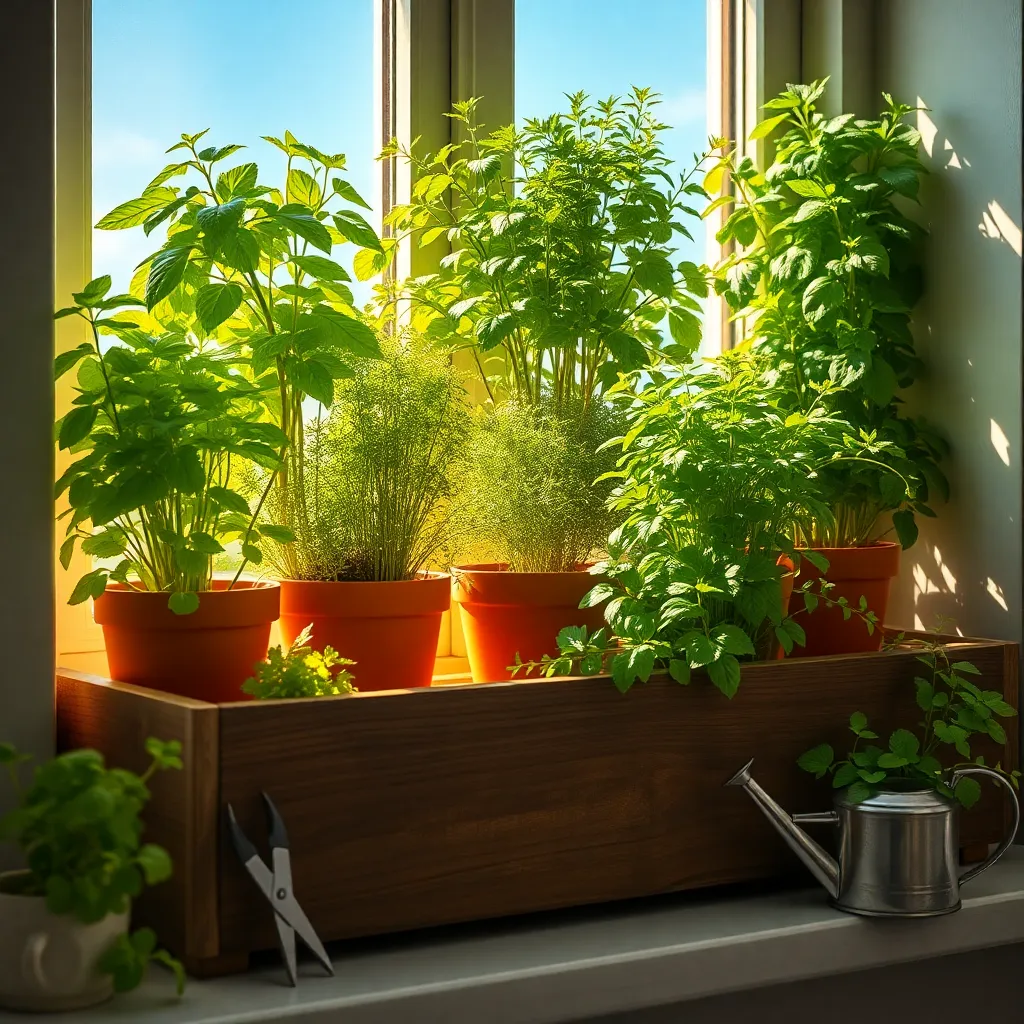
Sunny windowsills are perfect spots for growing a variety of herbs indoors. Light-loving herbs such as basil, thyme, and rosemary thrive in these bright locations, making it an ideal choice for a budget-friendly herb garden.
Begin by selecting containers that have good drainage to prevent waterlogging. Use a lightweight potting mix specifically formulated for herbs to ensure proper aeration and nutrient availability.
Watering is crucial, but it’s important to avoid overwatering; check the soil moisture by inserting your finger about an inch deep. If it feels dry, it’s time to water your herbs, ensuring the water drains out completely.
For those looking to optimize growth, consider rotating the pots weekly to ensure even light exposure and prevent the herbs from leaning toward the sun. Fertilize sparingly, using a diluted liquid fertilizer once a month to provide essential nutrients without overwhelming the plants.
Conclusion: Growing Success with These Plants
In exploring these 10 budget-friendly herb garden ideas, we discovered innovative ways to nurture both our green spaces and our relationships. From creating windowsill gardens and upcycling containers to building vertical herb towers and community gardening, each idea reminds us of the value of creativity, communication, and collaboration in relationships. We learned the importance of shared goals through DIY projects, the joy of nurturing growth together, and how a little effort can bring abundant rewards.
As your next step, choose one idea that resonates most with you and your partner or family, and start planning your herb garden adventure today. This shared project can spark meaningful conversations and deepen your connection.
To ensure these ideas are at your fingertips when inspiration strikes, save or bookmark this article. It’s a handy guide for rekindling the joy of collaboration in your relationships whenever you need it.
By cultivating these small gardens, you’re also sowing the seeds for a flourishing relationship, where teamwork and nurturing efforts bloom into lasting success. Remember, every garden, like every relationship, thrives on care and attention. Your relationship success begins with the simple act of planting that first seed.

